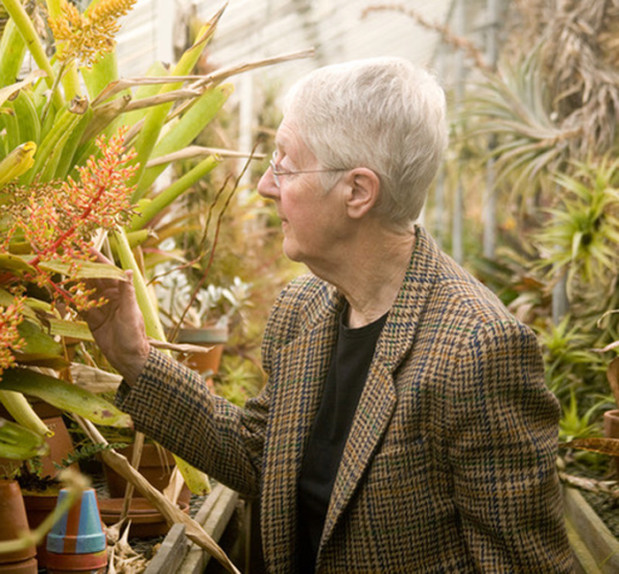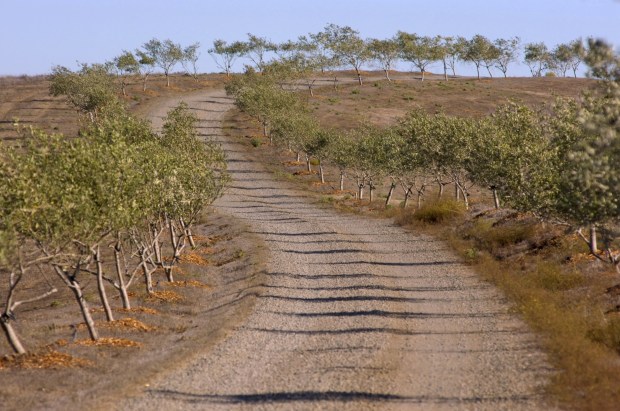
Press » The History & Mystery of California's Olive Trees


When London-born neurosurgeon Judith M. Taylor and her ophthalmologist husband, Irvin, moved from New York to Marin in 1994 to retire, they settled into a Tiburon home with a garden that needed attention.
With the help of San Rafael landscape architecture firm Pedersen Associates, the couple laid out a Mediterranean-inspired garden that included 24 olive trees similar to the ones she had admired at Strybing Arboretum in San Francisco’s Golden Gate Park.
“Once all the trees were in the ground I was blown away by their beauty and rushed off to look for a book about them but could not find anything,” Taylor recalls. So, she set out to research their history and pen her first book, “The Olive in California: History of an Immigrant Tree” (Ten Speed Press, 2000).
On Feb. 25, Taylor, now a San Francisco resident and honorary librarian and book editor for the San Francisco Garden Club, will revisit the topic and her book in a free talk at the Corte Madera Library. She will trace the tree’s journey, beginning in the 16th century when it arrived in Mexico through the present day.
Taylor confesses that she loves everything about olive trees “but particularly their color and shape,” and hopes guests at her lecture will leave as enthused about the olive tree as she has become.
The trees in her Tiburon garden were all Mission olives. “It was only after I got the history of the trees that I found about the non-fruiting trees.”
Fruiting olives trees produce edible olives; non-fruiting trees, which are ornamental only, do not.
“The trees stirred something in me that was almost dreamlike,” she says. “Their leaves are not the color we call ‘olive drab,’ but soft green on one side and dull silver on the other.”
With the help of San Rafael landscape architecture firm Pedersen Associates, the couple laid out a Mediterranean-inspired garden that included 24 olive trees similar to the ones she had admired at Strybing Arboretum in San Francisco’s Golden Gate Park.
“Once all the trees were in the ground I was blown away by their beauty and rushed off to look for a book about them but could not find anything,” Taylor recalls. So, she set out to research their history and pen her first book, “The Olive in California: History of an Immigrant Tree” (Ten Speed Press, 2000).
On Feb. 25, Taylor, now a San Francisco resident and honorary librarian and book editor for the San Francisco Garden Club, will revisit the topic and her book in a free talk at the Corte Madera Library. She will trace the tree’s journey, beginning in the 16th century when it arrived in Mexico through the present day.
Taylor confesses that she loves everything about olive trees “but particularly their color and shape,” and hopes guests at her lecture will leave as enthused about the olive tree as she has become.
The trees in her Tiburon garden were all Mission olives. “It was only after I got the history of the trees that I found about the non-fruiting trees.”
Fruiting olives trees produce edible olives; non-fruiting trees, which are ornamental only, do not.
“The trees stirred something in me that was almost dreamlike,” she says. “Their leaves are not the color we call ‘olive drab,’ but soft green on one side and dull silver on the other.”

Alan Dep/Marin Independent Journal
Olive trees have a fascinating history
as well as a mystery, according to Judith M. Taylor.
They carry with them a fascinating history, as well as a mystery. They “parallel our civilization, from before the time of the ancient Greeks to the present. Yet, there is still no clearly recognized endemic site of its origin. Most of the ideas are guesses,” she says.
“While we think of the olive tree as perfectly adapted to the wet winter/dry summer Mediterranean cycle, in fact, if you go back far enough into evolution, the tree developed in a summer wet environment,” she says.
This is why for a truly excellent crop it is necessary to irrigate the trees vigorously in the summer.
“The Olive in California” was the first of six horticultural history books that Taylor has authored. Details on each one can be found on her website at horthistoria.com.
“You cannot just write one book just as you cannot eat only one potato chip,” she quips. “It is almost an addiction.”
Her research into California’s olive trees took her on a journey through the state’s agricultural and horticultural history, which led to her second book, “Tangible Memories: Californians and Their Gardens 1800 to 1950” (Xlibris Press, 2003). This was the result of discovering Harry M. Butterfield’s unpublished manuscript in a box in the University of California’s archives.
“Butterfield, who spent his entire professional life at the University of California at Berkeley in the agricultural extension department, basically established the field of California horticultural history by himself, writing a long series of articles in the horticultural literature over many years,” she says.
“While we think of the olive tree as perfectly adapted to the wet winter/dry summer Mediterranean cycle, in fact, if you go back far enough into evolution, the tree developed in a summer wet environment,” she says.
This is why for a truly excellent crop it is necessary to irrigate the trees vigorously in the summer.
“The Olive in California” was the first of six horticultural history books that Taylor has authored. Details on each one can be found on her website at horthistoria.com.
“You cannot just write one book just as you cannot eat only one potato chip,” she quips. “It is almost an addiction.”
Her research into California’s olive trees took her on a journey through the state’s agricultural and horticultural history, which led to her second book, “Tangible Memories: Californians and Their Gardens 1800 to 1950” (Xlibris Press, 2003). This was the result of discovering Harry M. Butterfield’s unpublished manuscript in a box in the University of California’s archives.
“Butterfield, who spent his entire professional life at the University of California at Berkeley in the agricultural extension department, basically established the field of California horticultural history by himself, writing a long series of articles in the horticultural literature over many years,” she says.
Marin Independent Journal, February 15, 2019

